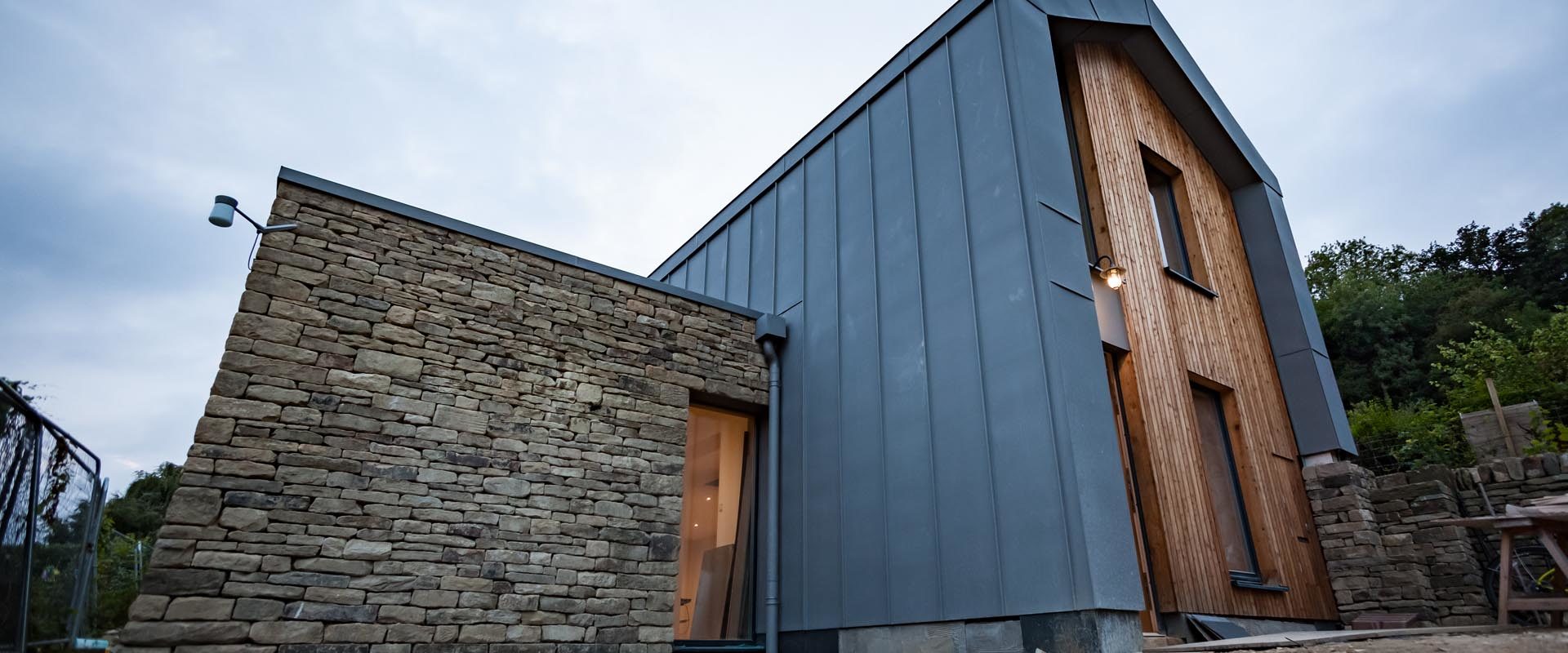When you think about what you need out of a home, it’s easy to forget some of the fundamentals that ensure you and your family are comfortable, safe and healthy. This is mainly because we don’t talk about these things in relation to our houses. We talk about numbers of bedrooms, parking, gardens, Internet speed, even solar panels, but do any of these things meet our primary needs?
When we say we design sustainable buildings, your comfort, safety and health are exactly what we’re talking about. We’ve found the only way we can guarantee our designs improve your comfort is by adopting a fabric first approach to the building’s construction and by using the Passivhaus methodology.
This approach to our work means we can confidently deliver all of the following:
Low energy (and low cost) living:
To achieve the Passivhaus standard you need to get space heating demand really, really low. Perhaps 10% of what a new-build house should be achieving and probably 5% of what most new-build houses actually achieve.
Even if you’re not aiming for the standard, the method allows us to assess the cost vs. performance gains of different designs and constructions. We rarely struggle to get excellent performance even when constraints aren’t favourable.
Imagine enjoying a warm, comfortable home yet with annual energy bills in the low £hundreds; imagine what else you could spend your money on.
High thermal comfort:
A well-insulated home doesn’t necessarily mean it’s a comfortable home.
The Passivhaus methodology demands, and we always specify, excellent air-tightness to minimise heat loss through air-leakage. This has the benefit of stopping draughts which can cause discomfort.
We design every external component of the house; wall, roof, floor, window so its internal surface doesn’t get below 17degC, even when it’s below zero outside. This eliminates cold surfaces radiating cold at you. It also rids your home of the conditions that give rise to unhealthy condensation, damp and mould.
You also don’t need wood burning stoves or under-floor heating when the air is a cosy 21degC and the floor under your feet is barely colder.
Excellent air quality:
The final piece in the Passivhaus puzzle is mechanical ventilation. Natural ventilation has been proven time after time to be unable to provide sufficient fresh air to keep us healthy. A mechanical ventilation with heat recovery (MVHR) system ensures a consistent supply of warm fresh air no matter the temperature outside.
An (MVHR) system also has filters to clean the incoming air of pollen, dust and other particles. So you’ve got no mould and your incoming air is controlled, fresh and filtered. The chances of your children developing asthma are dramatically reduced and if you’re a hay fever sufferer, imagine having filtered fresh air 24/7.
Reduced summer overheating:
The Passivhaus methodology requires us to limit summer overheating and predicts how much overheating the building will experience. Again, you don’t need to be aiming for the standard for our experience to be useful. We always aim for less than 5% overheating (when the house is predicted to be above 25degC) over the course of a year.
Every year, in my own 1960s home, we have real anxiety trying to keep our daughters’ bedrooms safely below 30degC at the hottest time of year. This just wouldn’t happen in a house we’ve designed using this method and will be a thing of the past once we complete our retrofit next year.
Peace and quiet:
Entering one of our low energy homes was recently described as “like shutting the door on an expensive car”. You immediately leave the noise of the world outside. Thickly insulated walls, roof and floor; triple glazed windows, strict air-tightness and mechanical ventilation all work together to provide homes with minimal background noise even when you’re not aiming for the Passivhaus standard.
Your only problem might be sleeping elsewhere when you’re so used to the peace and quiet.
Longevity built in:
When we take a fabric first approach we avoid high-tech solutions like solar panels so there’s inherently less to go wrong and to maintain. Apart from an MVHR service at the same intervals as your boiler, the building performance and comfort relies on nothing else actively working to deliver all of these benefits.
Your home quietly gets on with keeping you very comfortable so you can get on with your life.
A Clear Conscience:
You’ll notice that we haven’t once mentioned climate change or saving the planet. You don’t have to be worthy to want a sustainable home or have to change your lifestyle. This is about prioritising you and your family’s needs; reducing carbon emissions and helping our planet is just a massive bonus. And our portfolio clearly shows that using this rigorous approach doesn’t conflict with us delivering beautiful and engaging architecture. We have to work a bit harder for you with more constraints, but we think it’s worth it.
We’d love to help you transform your home into a comfortable, calm and healthy retreat. Contact us to arrange for a consultation today.
Alternatively, sign up to our newsletter to receive our free cost calculator to help you plan your dream project.
